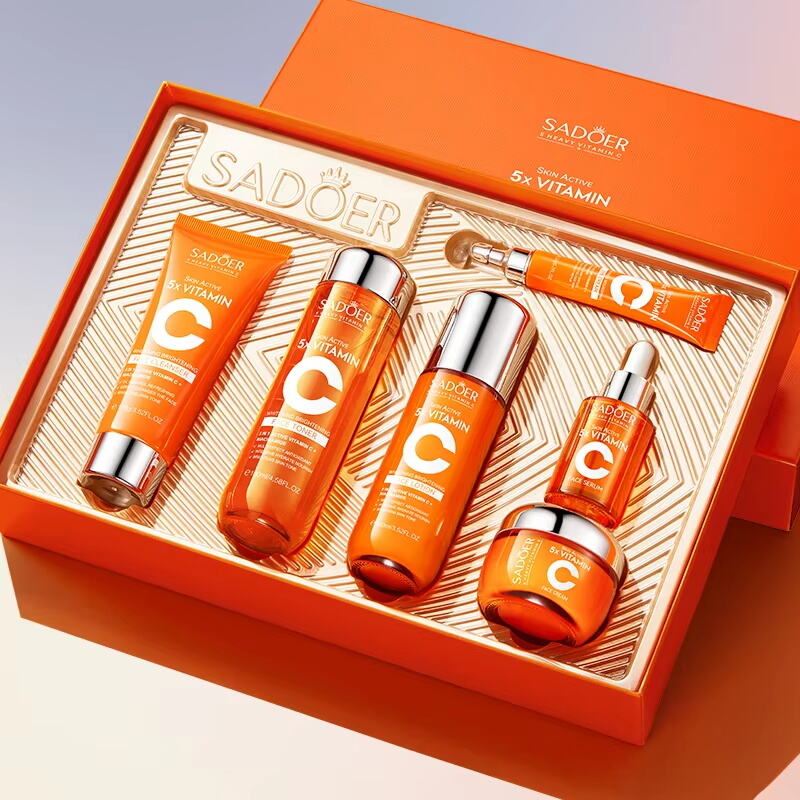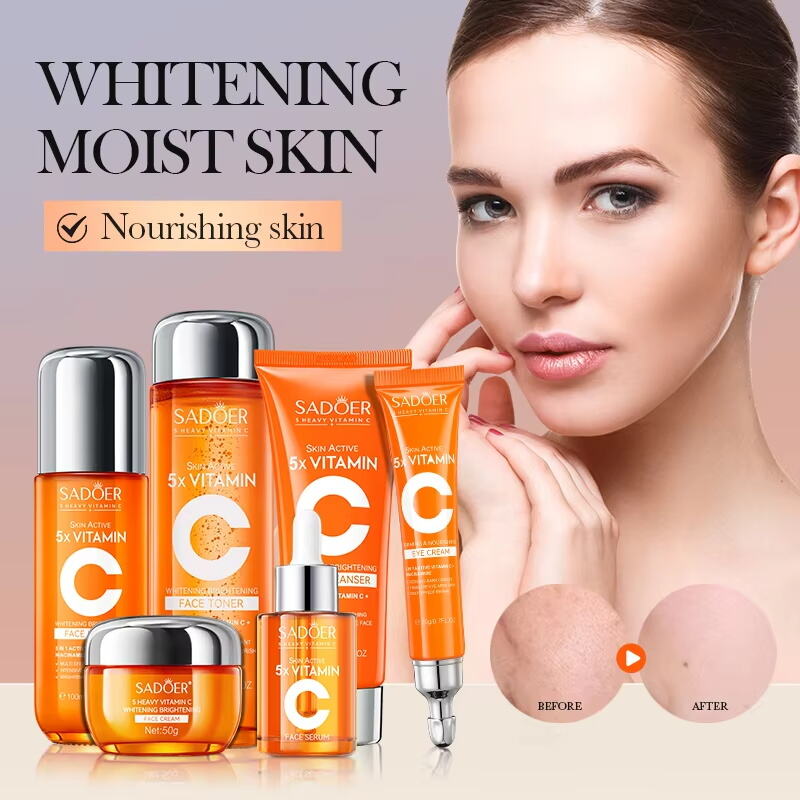Prep Work for Better Skin Care Results
Getting the best from your Face Cream starts before you even dispense the product. Prep work — cleansing, gentle exfoliation when needed, and a short moment of targeted serum application — sets the stage for maximum absorption. Clean skin allows the Face Cream to reach the upper layers without being blocked by makeup residue, sunscreen, or environmental grime. Think of the Face Cream as the final sealing step in a sequence: the better the prep, the more the Face Cream can do.
Why prep matters for absorption
If your pores and skin surface are clogged, no amount of Face Cream can penetrate effectively. Cleansing removes oils and pollutants that act like a barrier. When you exfoliate lightly, you get rid of dead cells that reflect less product and create an uneven surface. A clean, slightly damp skin surface helps the Face Cream spread easily and improves uptake of both humectants and actives contained in it.
Quick prep checklist
Start with a gentle cleanser suited to your skin type, follow with a light toner or hydrating mist if your skin tolerates it, and apply any thin serums while the skin is still slightly damp. This micro-moist environment lets a Face Cream lock in hydration quickly. Keep track of timing: wait just long enough for serums to settle (about 30 seconds) before applying the Face Cream so everything layers rather than competes.
How to Choose the Right Face Cream for Your Skin
Match texture to skin type
Not all Face Creams are created equal. For oily or acne-prone skin, choose a lightweight gel-cream or non-comedogenic lotion to avoid pore blockage. Dry skin benefits from richer Face Creams with occlusives and butters that seal moisture in. Combination skin may respond best to a medium-weight Face Cream that hydrates without becoming greasy in T-zone areas.
Focus on functional ingredients
What you put in your Face Cream matters as much as how you apply it. Humectants like hyaluronic acid and glycerin attract water; emollients such as squalane and fatty acids smooth; and occlusives like petrolatum or beeswax lock moisture in. If you want anti-aging benefits, select a Face Cream with evidence-backed actives such as retinoids, peptides, or stabilized vitamin C. Always align the Face Cream’s active profile with your skin goals.

The Correct Order to Apply Face Products
Layering logic before applying Face Cream
Apply products from thinnest to thickest. That means lightweight serums and treatments first, then your Face Cream to seal. Applying a Face Cream before a serum prevents the serum’s active ingredients from reaching skin and reduces the Face Cream’s performance. Use the Face Cream last in your treatment sequence so it functions as both a hydrating and protective final layer.
Timing between layers
Give thin products a short moment to settle—10 to 30 seconds—before applying the Face Cream. For potent actives like vitamin C or retinoids, follow the product-specific guidance; they may need a slightly longer absorption window before layering. When in doubt, a brief pause ensures the layers don’t pill and that the Face Cream can lock in everything beneath it.
Application Techniques for Maximum Absorption
The right amount and distribution
Less is often more when applying a Face Cream. Start with a pea-sized amount and add a little more only if needed. Overloading the skin can leave product sitting on the surface rather than being absorbed. Warm the Face Cream between clean fingertips and apply in thin, even layers. This encourages the skin to accept the product rather than repelling it.
Motion and pressure that help absorption
Use gentle, upward strokes to distribute the Face Cream. Pressing or patting motions are particularly effective because they promote circulation and help the Face Cream sink into the skin. Avoid rubbing vigorously; that friction can irritate and actually reduce absorption. For fragile areas around the eyes, use the ring finger with a light tapping motion when applying a compatible eye cream rather than a general Face Cream.
Using Tools to Improve Face Cream Penetration
Facial massage and gua sha benefits
Manual facial massage or gua sha can increase microcirculation and help the Face Cream absorb more deeply. Use a small amount of Face Cream as the glide medium and perform gentle strokes that follow lymphatic pathways. Fifteen to sixty seconds of focused massage improves product uptake, reduces puffiness, and supports skin tone.
When to use a facial roller or microcurrent device
A cool jade roller can help a Face Cream settle and feels soothing post-application. Microcurrent devices, used according to manufacturer instructions, can temporarily improve the appearance of firmness and make your Face Cream feel more effective. Always ensure tools are clean before use and do not overwork fragile skin.
Environmental Factors That Affect Face Cream Performance
The role of skin hydration and humidity
Face Cream absorption is influenced by ambient humidity. In dry environments, the product may hydrate the skin but lose moisture quickly; choose a Face Cream with occlusives to lock in hydration. In humid climates, the same Face Cream may feel heavier, so opt for a lighter formula. Consider using a hydrating mist before the Face Cream in dry conditions to boost absorption.
Temperature and product penetration
Warm skin tends to absorb a Face Cream more readily. Applying your Face Cream after a warm shower or following a warm compress can enhance penetration. Conversely, applying a Face Cream to very cold skin may leave it sitting on top—warming the Face Cream in your hands slightly can help.
Active Ingredients: How to Layer Them with Face Cream
Combining actives without irritation
If your routine includes acids, retinoids, or vitamin C, layer them thoughtfully beneath your Face Cream. For example, acids and retinoids can be drying; pairing them with a soothing Face Cream that contains ceramides or niacinamide helps maintain barrier function. Alternate nights for strong actives where needed, and allow the Face Cream to act as a restorative lock-in step.
Enhancing effectiveness with compatible pairings
Pair a humectant serum (like hyaluronic acid) with a sealing Face Cream to trap moisture. Use antioxidant serums under an SPF-containing Face Cream in the morning for protection and repair. The Face Cream’s role is to enhance the efficacy of these targeted treatments by preventing trans-epidermal water loss and stabilizing active ingredients on the skin.
Morning vs Evening Face Cream Routines
Daytime Face Cream priorities
In the morning, your Face Cream should prioritize hydration, lightweight protection, and compatibility with sunscreen. A daytime Face Cream that layers well under SPF prevents pilling and supports makeup application. If your Face Cream contains antioxidants, it contributes to defense against daily oxidative stress.
Nighttime Face Cream priorities
At night, choose a Face Cream that supports repair. Richer textures, retinoid-containing formulas, or creams with peptides and growth factors work well overnight when skin’s repair mechanisms are active. A night-time Face Cream can be thicker because you won’t need to layer sunscreen over it immediately.
Special Techniques for Sensitive or Reactive Skin
Patch testing and gradual introduction
Before you commit to a new Face Cream, patch test on the inner forearm or behind the ear for 48–72 hours. Introduce the Face Cream slowly, starting with alternate nights to gauge tolerance. If irritation occurs, pause and reintroduce after a waiting period.
Minimalist approach for compromised barriers
When skin is inflamed or compromised, simplify. Use a bland, fragrance-free Face Cream focused on ceramides, glycerin, and minimal actives. This gives the barrier a chance to recover while still benefiting from proper hydration and the restorative effects of a well-chosen Face Cream.
How to Avoid Common Application Mistakes
Over-application and product layering errors
Applying too much Face Cream is counterproductive because unabsorbed product can trap debris and lead to congestion. Keep layers thin and allow each to absorb before adding more. If you use multiple products, ensure they are compatible so your Face Cream does not negate their function.
Pilling prevention strategies
Pilling occurs when products don’t absorb properly or when incompatible formulations interact. To prevent pilling, wait between applying thin-serum layers and the Face Cream, and avoid mixing silicone-heavy products with water-based layers immediately. Proper order and thin layers help the Face Cream sink in smoothly.
Face Cream Storage and Stability Tips
Keep face creams effective longer
Store your Face Cream away from direct sunlight and high heat to preserve active ingredients. Refrigeration is useful for certain formulations, especially natural products without robust preservative systems. Always close containers tightly to prevent oxidation—this maintains the Face Cream’s potency over time.
Monitor expiry and contamination risks
Most creams have a PAO (period-after-opening) icon indicating safe usage time. Replace your Face Cream when it changes color, texture, or smell. Use a spatula to scoop product from jars to avoid introducing bacteria from fingers, which protects both the product and your skin.
When to Seek Professional Guidance
Persistent issues despite correct application
If you’ve optimized every step—prep, layering, application technique, and compatible actives—but still experience dryness, irritation, or lack of improvement, consult a dermatologist. They can identify underlying conditions and recommend prescription-strength Face Creams or treatments.
Combining clinical procedures with topical Face Creams
If you plan clinical procedures (chemical peels, laser), coordinate with your practitioner about Face Cream use before and after treatment. Some actives should be paused prior to procedures, while specialized Face Creams accelerate healing post-procedure.
Small Rituals That Make a Face Cream Feel Luxurious and Effective
Mindful application as a wellness ritual
The way you apply your Face Cream can be a mindful ritual: warm the product in your hands, breathe slowly as you massage it in, and finish with a gentle upward press. These moments reinforce a consistent habit, improving results because the Face Cream is used regularly and correctly.
Layering scents and sensorial cues thoughtfully
If fragrance is acceptable for your skin type, choosing a lightly scented Face Cream can make application enjoyable. But if you’re sensitive, choose fragrance-free to maximize tolerability. The sensorial experience of a Face Cream can impact adherence—if you enjoy the feel, you’re more likely to use it consistently.
FAQ
How much Face Cream should I use each application?
Use a pea-sized amount for the face and add sparingly for the neck and décolletage. Start small—and if your skin needs more hydration, layer thin applications rather than a single heavy blob. This technique helps the Face Cream absorb fully without leaving residue.
Can I apply Face Cream on damp skin?
Yes. Applying Face Cream to slightly damp skin helps lock in moisture. Use a mist or apply immediately after washing when skin is still a bit wet; the Face Cream will trap that hydration and increase absorption.
Does massage really help a Face Cream penetrate better?
Gentle massage and patting motions can enhance circulation and help the Face Cream sink in. Avoid aggressive rubbing; instead use light upward strokes or pressing motions to promote absorption and stimulate blood flow.
How long should I wait between serum and Face Cream application?
Wait about 10–30 seconds for thin serums to settle before applying your Face Cream. For potent actives like vitamin C or retinoids, follow product-specific guidance—these may benefit from slightly longer absorption time before sealing with a Face Cream.
Table of Contents
- Prep Work for Better Skin Care Results
- How to Choose the Right Face Cream for Your Skin
- The Correct Order to Apply Face Products
- Application Techniques for Maximum Absorption
- Using Tools to Improve Face Cream Penetration
- Environmental Factors That Affect Face Cream Performance
- Active Ingredients: How to Layer Them with Face Cream
- Morning vs Evening Face Cream Routines
- Special Techniques for Sensitive or Reactive Skin
- How to Avoid Common Application Mistakes
- Face Cream Storage and Stability Tips
- When to Seek Professional Guidance
- Small Rituals That Make a Face Cream Feel Luxurious and Effective
- FAQ

